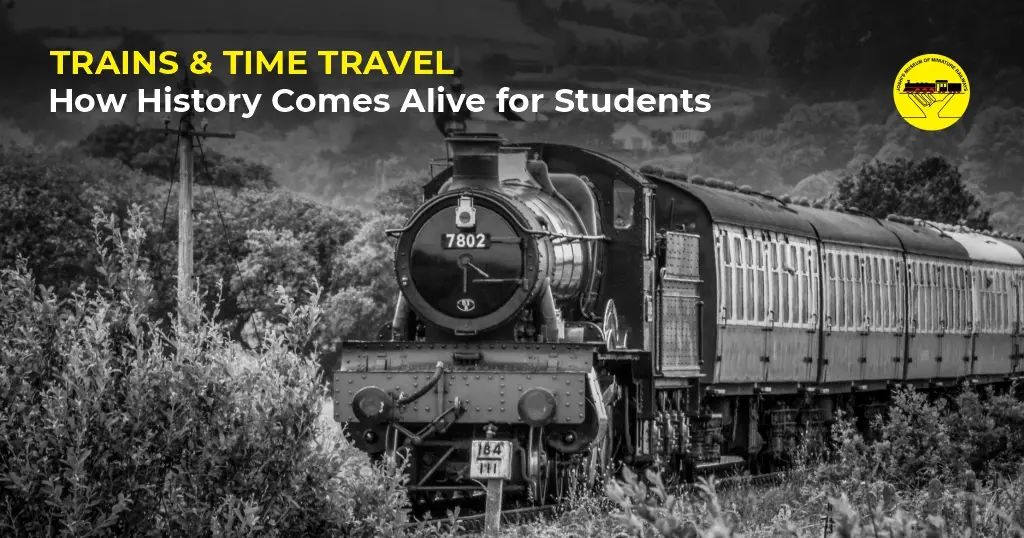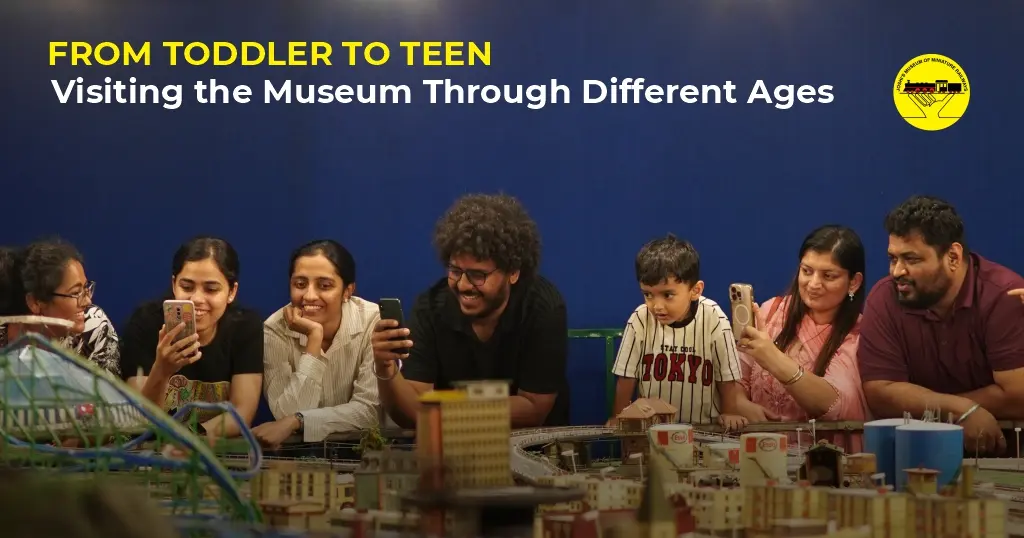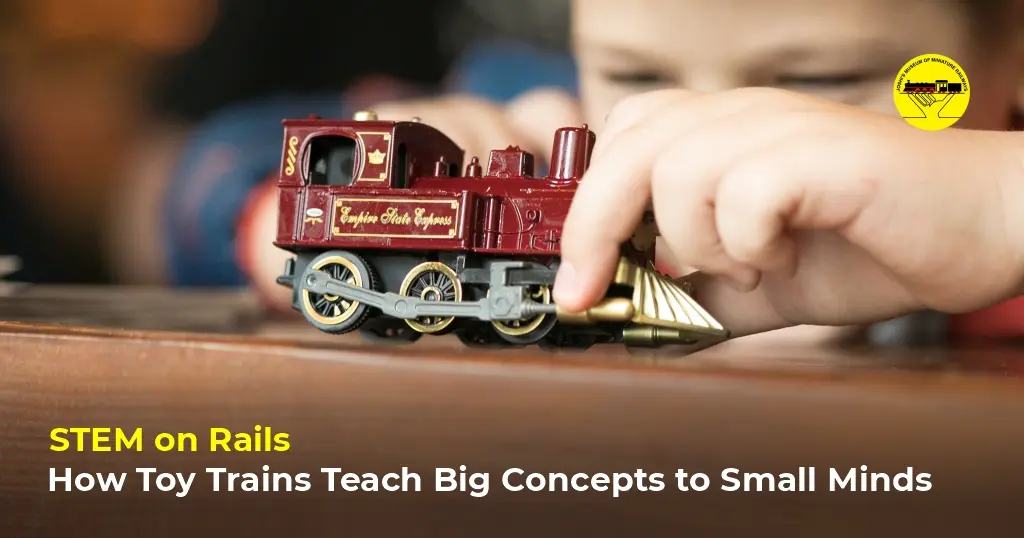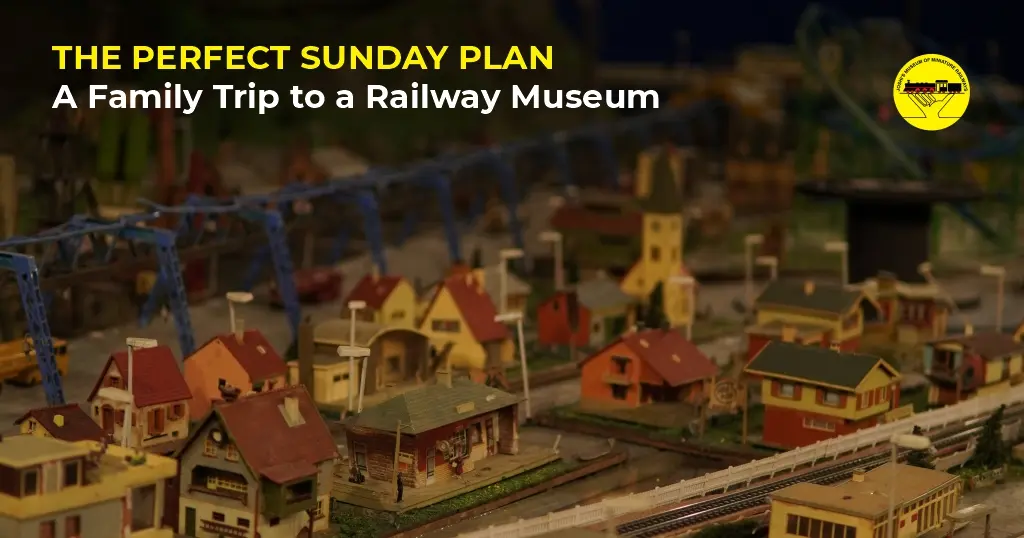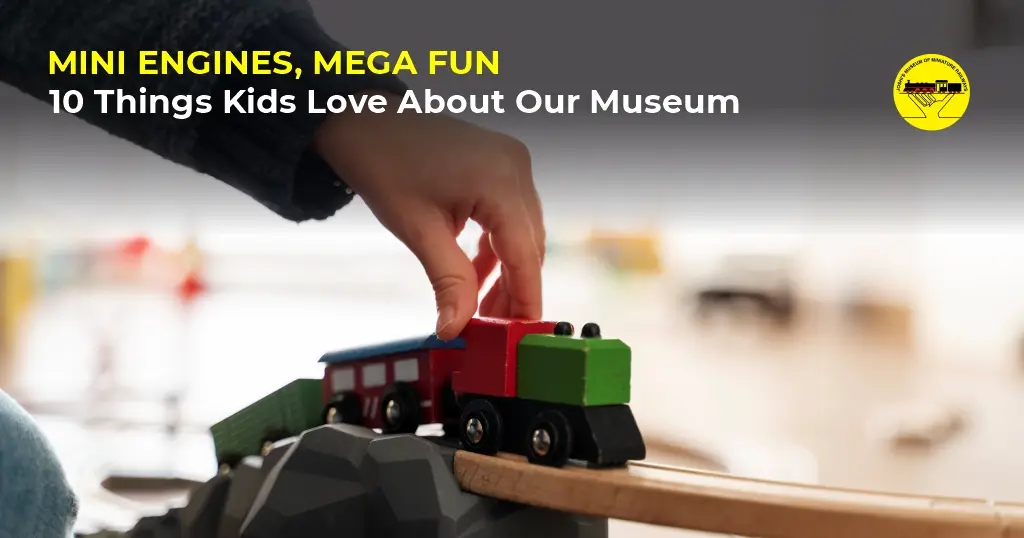History is often imagined as a series of dusty textbooks, dates to memorize, and long lectures. But at Joshi’s Museum of Miniature Railways in Pune, history doesn’t sit still — it moves. It whistles, it chugs, and sometimes it glides at lightning speed like the modern ICE train. For students, a visit here is not just an outing; it’s a journey across time, narrated through lifelike voiceovers, dazzling light shows, and exquisitely detailed railway models.
The Magic of Storytelling Through Voiceovers
One of the most fascinating aspects of the museum is how history is told through voiceovers. Rather than relying only on static displays, the narration brings every train to life. When the voice speaks of the early steam locomotives, you can almost smell the coal and feel the heat of the engine. As it shifts to the grand age of diesel and later electric trains, the narration adapts its tone — capturing the excitement of progress.
This method makes students feel like they’re part of the story. Instead of passively absorbing facts, they’re taken on a time travel experience, where technology and culture merge. Studies in museum education show that visitors remember 60% more when learning is combined with storytelling and sensory engagement, compared to traditional rote methods. Joshi’s Museum uses this principle brilliantly, making history a narrative instead of a list of dates.
Steam: The Beginning of the Journey
The models begin with steam trains, the pioneers of the industrial age. In the miniature world, you’ll see tiny locomotives puffing out smoke-like effects, a reminder of how these machines powered not only railways but also industries and economies.
For students, steam trains represent the spirit of invention. They mark the beginning of human ambition to shrink distances and connect communities. At Joshi’s, the details of the steam engines — their wheels, pistons, and chimneys — give learners a close-up view of how engineering in the 19th century shaped modern travel.
Diesel: The Era of Strength
Moving through time, the models showcase the diesel engines that replaced steam in much of the world, including India. Diesel locomotives symbolize strength and efficiency. The voiceover narrates how these giants of the tracks transformed railway networks, carrying heavier loads and traveling longer distances without the need for constant refueling.
For school groups, this transition sparks discussions about technological progress. How do societies adopt new inventions? What happens when one era ends and another begins? These trains embody such changes, helping students connect history with innovation.
Electric: Powering the Future
The leap to electric trains is another milestone narrated in the museum. With their sleek design and humming motors, these models contrast sharply with the puffing, clanking steam locomotives of the past. The narration emphasizes how electricity revolutionized travel, reducing pollution and increasing speed.
Students watching these models understand the broader cultural context too. Electric trains are not just vehicles; they symbolize a shift towards sustainability and modern living. India’s own electrification drive is one of the largest in the world, and students can see how these global and national stories align.
The Arrival of the ICE
Finally, the journey reaches the present day with the InterCity Express (ICE), a marvel of modern engineering. With its aerodynamic design and breathtaking speed, the ICE represents the pinnacle of railway technology. At the museum, the miniature ICE zips across the tracks, a sharp contrast to the leisurely pace of the old steam engines.
The voiceover here takes a more futuristic tone, talking about speed, precision, and connectivity in today’s world. For students, it is a powerful metaphor for progress — showing how human imagination continues to push boundaries.
Museums as Classrooms of Experience
Research from the American Alliance of Museums shows that students who visit museums score 9% higher in critical thinking skills than those who do not. Why? Because museums provide experiential learning. At Joshi’s, students don’t just see history; they hear it, watch it move, and even imagine themselves on board these trains.
The layered experience of models, narration, and light shows creates a multi-sensory classroom. Teachers accompanying their students often notice how even quieter children light up, asking questions about the past, present, and future of trains.
Connecting Generations
Another unique dimension is how the museum connects different age groups. For older visitors, the steam trains may evoke nostalgia. For students, the modern ICE may symbolize aspiration. When these experiences overlap, discussions between generations naturally happen. Fathers, mothers, and grandparents often share their first train journeys, creating an intergenerational storytelling experience that deepens learning.
From Textbooks to Tracks
Railways are a central chapter in Indian history — from colonial times to independence, and from economic development to today’s bullet train dreams. But textbooks can’t capture the thrill of movement, the sounds of engines, or the glow of railway lamps. Joshi’s Museum does.
When students see a miniature train pass over a tiny bridge or halt at a lit-up station, they’re not just learning history. They’re experiencing it in motion, and that makes all the difference.
Numbers That Speak Volumes
- Over 35,000 students have visited Joshi’s Museum in the last decade.
- A single show at the museum runs for 30 minutes, covering 150 years of railway history.
- More than 65 intricately designed train models are part of the collection, from steam locomotives to high-speed ICE trains.
- Surveys show that 80% of visiting students recall specific details from the voiceovers even weeks later — a sign of how effective narrative learning is.
Why Students Love It
For students, the appeal is simple: trains move, lights flash, and stories unfold. Unlike a static exhibit, Joshi’s Museum feels alive. They laugh when a miniature train toots its whistle, gasp when the ICE streaks past, and listen intently when the voiceover explains how locomotives shaped nations.
It’s not just education — it’s entertainment wrapped in culture, or what scholars now call “edutainment.”
The Last Stop: An Invitation
“Trains & Time Travel” is more than a clever phrase at Joshi’s Museum. It’s a reality. Every school that steps through its doors embarks on a journey through history, technology, and imagination. For students, it’s a memory that lasts longer than any classroom lecture. For teachers, it’s a tool to inspire curiosity.
So, the next time you think about how to make history lessons come alive, remember — sometimes the best classroom runs on miniature tracks.

